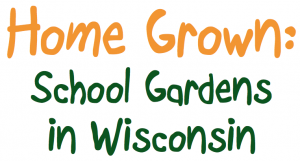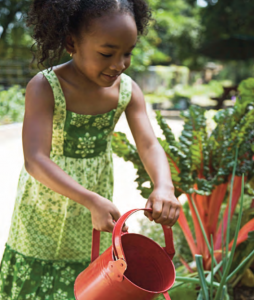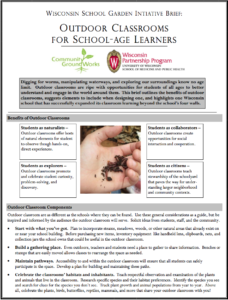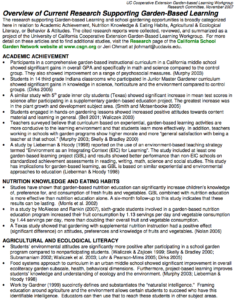 From the Department of Public Instruction. Children are more likely to absorb and integrate food knowledge if they have real-life contact with agriculture. School gardens offer a wonderful medium for students to get their hands dirty and learn about food, agriculture, and nutrition. This document profiles schools and walks through best practices to create a productive and lasting garden-based education program. View Resource »
From the Department of Public Instruction. Children are more likely to absorb and integrate food knowledge if they have real-life contact with agriculture. School gardens offer a wonderful medium for students to get their hands dirty and learn about food, agriculture, and nutrition. This document profiles schools and walks through best practices to create a productive and lasting garden-based education program. View Resource »
Creating & Growing Edible Schoolyards
 An edible schoolyard is a great tool to provide real-life experiences and to help students make the connection of how vegetables and fruit move from the seed to table. Developed as part of the Minnesota Statewide Health Improvement Program Initiative, this guide walks through developing a school garden as a key strategy to creating healthier schools. View Resource »
An edible schoolyard is a great tool to provide real-life experiences and to help students make the connection of how vegetables and fruit move from the seed to table. Developed as part of the Minnesota Statewide Health Improvement Program Initiative, this guide walks through developing a school garden as a key strategy to creating healthier schools. View Resource »
Outdoor Classrooms for School-Age Learners
 Digging for worms, manipulating waterways, and exploring our surroundings know no age limit. Outdoor classrooms are ripe with opportunities for students of all ages to better understand and engage in the world around them. This brief outlines the benefits of outdoor classrooms, suggests elements to include when designing one, and highlights one Wisconsin school that has successfully expanded its classroom learning beyond the school’s four walls. Download Brief »
Digging for worms, manipulating waterways, and exploring our surroundings know no age limit. Outdoor classrooms are ripe with opportunities for students of all ages to better understand and engage in the world around them. This brief outlines the benefits of outdoor classrooms, suggests elements to include when designing one, and highlights one Wisconsin school that has successfully expanded its classroom learning beyond the school’s four walls. Download Brief »
Steps to a School Garden
 This website from the Collective School Garden Network has great resources for planning a garden, gaining community support, and implementing your plan, including lesson ideas and research on the benefits of garden-based education. View Resource »
This website from the Collective School Garden Network has great resources for planning a garden, gaining community support, and implementing your plan, including lesson ideas and research on the benefits of garden-based education. View Resource »
Overview of Research Supporting Garden-Based Learning
 This of research comes from the University of California-Cooperative Extension, 2007. View Resource »
This of research comes from the University of California-Cooperative Extension, 2007. View Resource »
